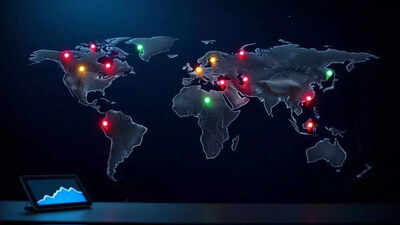
Scientists have struggled for many decades with a cosmological conundrum known as the
Hubble tension
—a persistent disagreement in how quickly the
universe
is expanding as inferred from observations made using different methods. The disagreement arises because different methods of estimating the expansion of the universe yield different measurements. On one hand, observations on galaxy and nearby supernovae measurements reveal an accelerating expansion, and cosmic microwave background (CMB) data—venerable light still present from the Big Bang—indicate deceleration.
The enigma continues notwithstanding a series of refinements to observing technique and theory, and physicists have moved toward ever more extreme alternatives.
Could a slow cosmic spin solve the Hubble tension
In a science-fiction-inspired move more than established physics, a new hypothesis suggests the universe may be rotating—extremely slowly. The idea has been put forth by István Szapudi of the University of Hawaiʻi at Mānoa, who proposes that a
slow cosmic spin
could be used to resolve the Hubble tension.
The universe could be taking 500 billion years to complete one complete rotation, a duration so vast that the movement would be barely noticeable to observers. Nevertheless, even this infinitesimal rotation might place a measurable impact on the overall expansion of the universe, yielding a new explanation for the longstanding inconsistencies between measurements of the Hubble constant.
Surprising theory to explain the truth behind this cosmic slow spin
To test this theory, Szapudi and his colleagues crafted a mathematical model according to what is known from physics. They began with a standard cosmological model and made only slight modifications by incorporating a very slight rotation component.
The result? Surprisingly optimistic.
By allowing for a bit of rotational motion within the model, scientists were able to calculate a consistent Hubble constant—a single number that quite nicely brings together the previous contradictory rates of expansion that emanated both from current and past observations.
This intriguing new hypothesis has opened up a new avenue of research. The follow-up involves creating a sophisticated computer model to simulate the effect of this gradual spin of the universe over time and space. This could conceivably help researchers be able to extrapolate detectable signatures of rotation that future telescopes and space missions can see.
New approach in finding the solution to the Hubble tension
What is particularly appealing about this model is that it is in no way at odds with any of the current observational evidence or with any known laws of physics. The proposed rotational correction is so minute that it does not exclude the standard cosmological model, which is founded upon a uniformly expanding universe.
Although ideas involving a spinning universe have been entertained in the past, they were largely dismissed due to lack of supporting evidence or due to contradictions with general relativity. However, Szapudi’s approach introduces rotation in a way that remains consistent with Einstein’s theory and modern cosmological principles—offering a balanced and elegant solution to the Hubble tension.
Also Read | NASA's oldest astronaut Don Pettit set to return from space on his 70th birthday after 220 days - know date, time and other details

 1 month ago
170
1 month ago
170




























 English (US)
English (US)